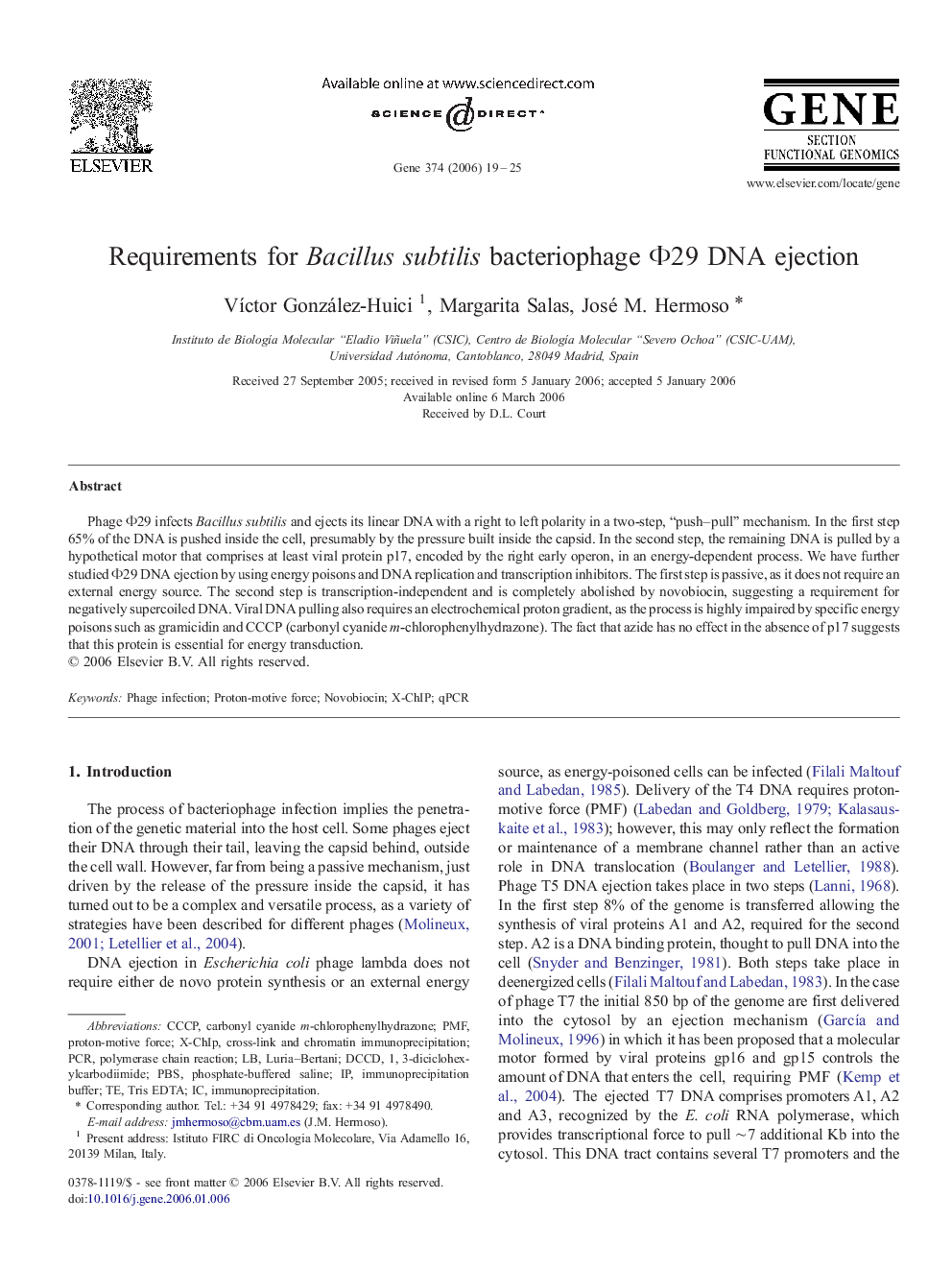| Article ID | Journal | Published Year | Pages | File Type |
|---|---|---|---|---|
| 2820121 | Gene | 2006 | 7 Pages |
Abstract
Phage Φ29 infects Bacillus subtilis and ejects its linear DNA with a right to left polarity in a two-step, “push-pull” mechanism. In the first step 65% of the DNA is pushed inside the cell, presumably by the pressure built inside the capsid. In the second step, the remaining DNA is pulled by a hypothetical motor that comprises at least viral protein p17, encoded by the right early operon, in an energy-dependent process. We have further studied Φ29 DNA ejection by using energy poisons and DNA replication and transcription inhibitors. The first step is passive, as it does not require an external energy source. The second step is transcription-independent and is completely abolished by novobiocin, suggesting a requirement for negatively supercoiled DNA. Viral DNA pulling also requires an electrochemical proton gradient, as the process is highly impaired by specific energy poisons such as gramicidin and CCCP (carbonyl cyanide m-chlorophenylhydrazone). The fact that azide has no effect in the absence of p17 suggests that this protein is essential for energy transduction.
Keywords
Related Topics
Life Sciences
Biochemistry, Genetics and Molecular Biology
Genetics
Authors
VÃctor González-Huici, Margarita Salas, José M. Hermoso,
